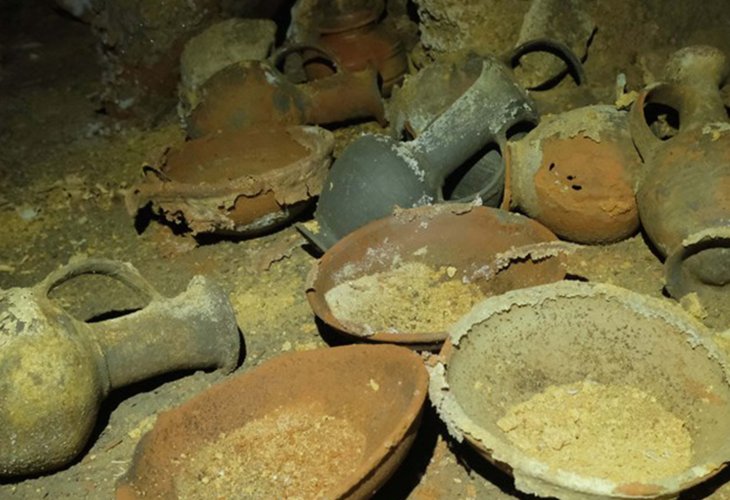Time Forgot This Hidden Tomb: A 3,300-Year-Old Discovery Rocks Israel
A stunning discovery was made at the Palmachim National Park when an ancient burial cave was uncovered. The cave, dating back 3,300 years to the era of Pharaoh Ramses the Great, contains numerous clay and bronze artifacts from a time when the Israelites were said to have been exiled from Egypt.
 (Photo: Emil Aljem, Israel Antiquities Authority)
(Photo: Emil Aljem, Israel Antiquities Authority)A Once-in-a-Lifetime Find: Last week, a remarkable ancient burial cave was uncovered at the Palmachim National Park. The discovery occurred when a tractor accidentally hit a rock, revealing its ceiling unexpectedly.
Archaeologists from the Israel Antiquities Authority were called to the site and descended a ladder into an awe-inspiring space that seemed frozen in time. Inside, dozens of intact clay and bronze vessels were found, just as they had been placed during burial ceremonies 3,300 years ago. These vessels served as burial gifts, believed to benefit the deceased in the afterlife.
The cave dates back to the era of Pharaoh Ramses the Great, who reportedly ruled during the Exodus.
Dr. Eli Yanai, an expert on the Bronze Age at the Israel Antiquities Authority, shared, "This is a once-in-a-lifetime discovery. It's not every day you encounter an Indiana Jones-like setting—a cave with artifacts untouched for 3,300 years. We're talking about the Late Bronze Age, the period of the legendary Pharaoh Ramses II. The fact that the cave was sealed and undisturbed by later thefts allows us, with modern scientific tools, to extract an abundance of information from the artifacts and the materials preserved on them, including unseen organic materials.
"The cave promises to provide us a complete picture of burial customs during the Late Bronze Age. Among the artifacts left behind, there are mainly dozens of pottery pieces in various sizes and shapes. They include deep and shallow bowls, some painted in red, high-legged bowls, cooking pots, jars, and clay lamps that held oil.
According to the expert, some of the jars were produced along the coasts of Lebanon and Syria. Alongside these jars, small storage vessels were found, primarily jugs and juglets intended for storing and trading valuable small quantities. These items were imported from areas like Tyre, Sidon, and other port cities along the Lebanese coast. Additionally, numerous clay artifacts were imported from Cyprus.
Eli Escusido, Director of the Israel Antiquities Authority, and Raya Shurky, Director of the Nature and Parks Authority, commented: "The discovery at Palmachim National Park is exceptionally unique and thrilling. The news of the cave's discovery spread like wildfire in the scientific community, and we are receiving numerous requests from researchers eager to join the expected archaeological dig. Unfortunately, in the short time before the cave was sealed, and despite the security, some items were stolen from the cave, and an investigation is ongoing. In the coming days, we will work together to determine the necessary research and conservation efforts required for this exceptional site—a true celebration for the archaeological world and the ancient history of Israel."

